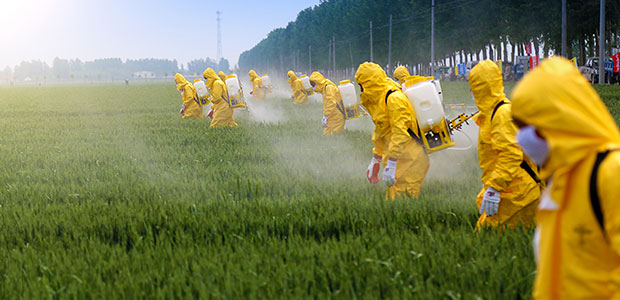
Page 2 of 2
“Take Home” Contaminants: How Workplace Toxins Don’t Stay at Work
Researchers have been calling for a re-evaluation of the treatment of workplace contaminants—especially given the risks they post to small children. Toxic contaminants are reportedly being bought home by employees’ workplaces and exposing their families to dangerous substances, according to experts and one article from Occupational health & wellbeing.
A review by Boston University School of Public Health (BUSPH) and the Harvard T H Chan School of Public Health is calling for “taking home” exposures to be recognized as a public health hazard.
Here’s why: the level of contaminants that employees likely bring home on their clothes, for example, is likely low on a day-to-day basis. However, when they build up—or come from two or three sources—they can be enough to harm health or even child development.
Workers inadvertently carry these toxins home for a number of reasons, too. This is not an issue of worker carelessness, as some people like to dismissively say. The review said that there is a precariousness to many working environments where employees are afraid to raise concerns about the safety of their environments for fear of losing their jobs.
Researchers say that not only is this a public health hazard, but there is also a need for better workplace systems where employees feel safe to express concerns. There also needs to be better regulation on the handling of these toxins.
“To prevent the chronic, low-level, take-home exposures that are particularly harmful for developing children, a multi-tier intervention approach including interventions at the workplace, home, and community levels are needed,” said the review’s author, Dr. Diana Ceballos, and an assistant professor of environmental health at BUSPH.
“Although OSHA does regulate some key workplace exposures that can become take-home exposures, such as asbestos, lead, and pesticides, often regulations are not up to date or enforced enough to be protective of health at the family level,” Ceballos said.
Ceballos herself has firsthand knowledge of the reality of the problem, according to one article. When she worked as an industrial hygienist and the Center for Disease Control and Prevention (CDC), she worked on a number of cases—including one where two children had lead poising from their father’s work at an electronics recycling facility. In that case, the father was not exposed to enough lead to get sick (thanks to him being a grown man). However, the lead dust that came home with him on his body and clothing quickly affected his children’s health.
“The father had only worked at this facility for about a year when his kids' physician found they were poisoned,” Ceballos says. “Within just a few years, the kids exhibited textbook health effects of lead, including behavioral, developmental, and learning difficulties.”
The authors of the review also write that workers who are most likely to take home contaminants are often and increasingly low-income individuals with “precarious employment situations” like those working in construction and undocumented immigrants. These types of workers do not have access to the same intensive or regimented safety regulations and employment protections as other workers, and they could easily lose their jobs (or face deportation) if they raise safety concerns.
The review is a comprehensive look at a study published in the Annals of Work Exposures and Health journal titled “Eliminating Take-Home Exposures: Recognizing the Role of the Occupational Health and Safety in Broader Community Health.”
A 2019 study also found that while protective equipment does protect workers from contaminants, it might not always or in every case. The study looked at pesticide exposure among horticulture workers—and the results surprised many.
Specifically, the 2019 study looked the presence of herbicides—like glyphosate—on employees even with the existence of personal protective equipment. After analyzing 200 urine samples and 350 wipes form gloves worn by horticulture workers, the study found that workers’ hands were the most commonly exposed area, involving more than 40 percent of glyphosate exposure cases.
Practices in removing, cleaning, or disposing of personal protective equipment also contributed to pesticide exposure levels.
The whole issue with “take home” contaminants is part of a systematic and complex issue that combines economic inequalities, class differences, employer policies, and workplace culture that puts these workers and their families at risk.
“To prevent the chronic, low-level, take-home exposures that are particularly harmful for developing children, a multi-tier intervention approach including interventions at the workplace, home, and community levels are needed,” Ceballos said.